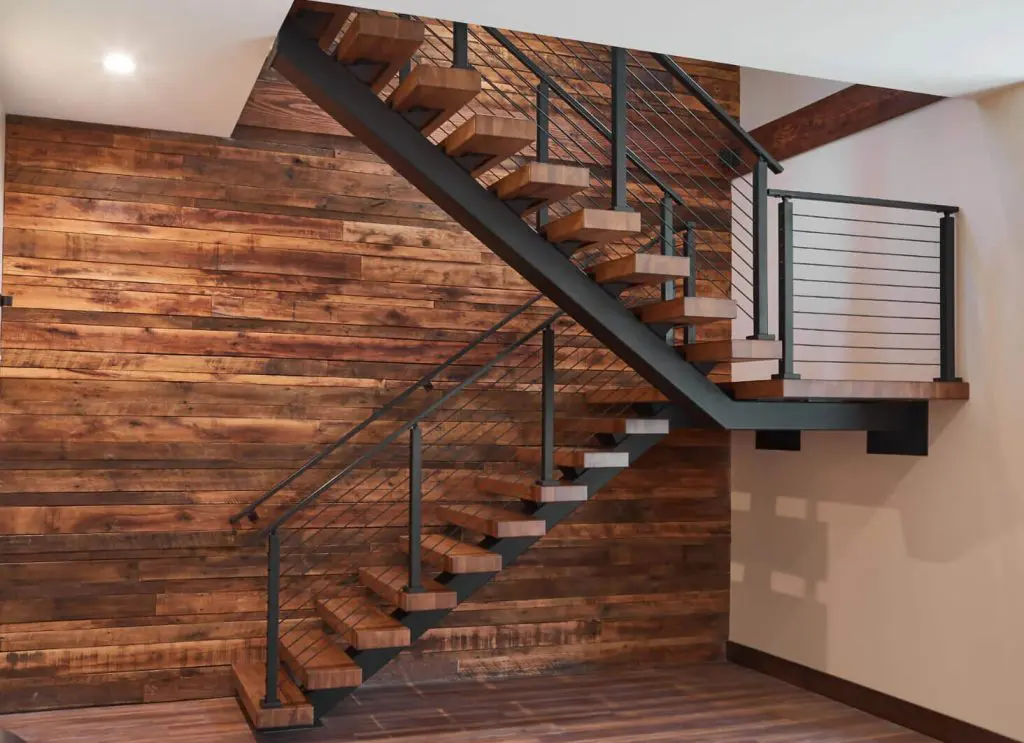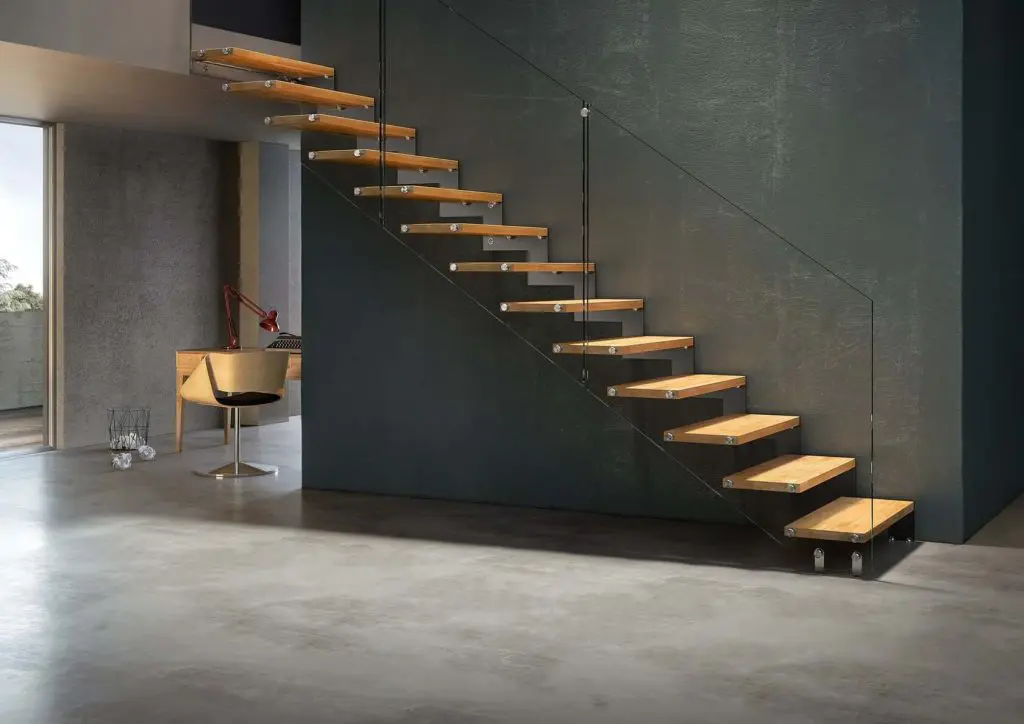For a few decades now, staircases have been considered focal points in architectural design, especially in residences. Today, people seek unique staircase designs with a variety of materials instead of following the crowd by using the same R.C.C. staircases.

Unlike the ornate styles of staircases with balusters and other decorations, people are now more inclined towards sleek staircases with clean lines and minimal designs.
In recent years, floating staircases have become a staple of house construction, especially in luxurious house design. Below is all the information you need to know about floating staircases so you can decide whether or not to opt for one in your new home.
What is Floating Staircase?
The term floating staircase, also known as open staircase, is often misunderstood as it makes people believe that they are any flight of staircases that doesn’t have risers. However, that is far from being correct.

In truth, floating staircases are typically anchored to a bearing wall or one or two stringer beams embedded in a wall, with the help of steel pins or bolts. This gives the visual effect of the stair tread “floating” in the area.
Different Types of Floating Staircase
1. Mono Stinger
Mono stringer floating staircases use a single, beam-like stringer that supports the center of the treads from below. Due to this structural feature, mono stringer stairs have a hold on modern stair design. Steel and plywood mono stringers are the most common types of stringers used in these types of staircases.

2. Double Stinger
Double stringer floating staircases are the same as mono stringers except that they use two support members instead of one below the treads. They are comparatively cheaper than mono stringers as they are less aesthetically pleasing.

3. Cantilevered Staircase
Cantilevered staircases are the ideal type of floating staircase. They don’t have stringers or any kind of support. Instead, the treads are simply fixed on the wall and the wall itself acts as the main support for the treads.

Advantages of Floating Staircases:
Less SPaCe
Floating staircases require much less space compared to traditional staircases. So, they are ideal for compact homes.
Structural Safety
Despite how they look, floating staircases are structurally safe and have sufficient support for the treads. For safety, maximum floating staircases incorporate handrails on at least once, or in some cases both sides of staircases.
Aesthetic Appeal
Floating staircases are one of the most aesthetically pleasing stair designs out there. This is one of the main reasons why they are widely popular, especially in the luxury interior.
Disadvantages of Floating Staircases:
Sag over Time
If not properly constructed or used in cheaper materials, there are high chances that the treads may sag over time, especially in cantilevered stairs.
Prone to Accidents
Since there are no risers in the floating staircase, a person can easily get their foot caught in between the steps, which could lead to an accident. Therefore, floating staircases are not very suitable for people with poor vision or lack of coordination.
Expensive to construct
Floating staircases are more expensive than conventional staircases since the former require more engineering in their design and greater expertise in their execution. Even the materials used are required to be of top quality.
Types of Materials Used in Constructing Floating Staircase
1. Wood
A wide range of hardwood is used to design floating staircases such as red oak, hard maple, white oak, walnut, and so on. Wood is structurally sound and creates a luxurious and contemporary look.

2. Concrete
Concrete floating stairs are built in two types of furnishes; polished and rustic. They are slightly more expensive than wooden stairs. However, concrete stairs are much more stable and are not easily damaged.

3. Glass
Nowadays, glass treads are becoming more and more popular in residences as they allow sunlight to filter down the different levels. The glass treads are usually at least 32mm thick and made of toughened glass strong enough to bear heavyweights.

4. Metal
Metal treads provide a wide variety of designs and are suitable for both exterior and interior stairs. They are available in checker plates to create an industrial appearance. However, stainless steel is more commonly used.

5. Stone
Different types of stone such as marble, granite, limestone, travertine, etc. can also be used to build floating staircases. They are more expensive, strong, and durable than any of the materials listed above.

When properly engineered and accompanied by a suitable railing system, floating staircases are safe alternatives to traditional staircases. Whether you choose conventional or floating staircases, they both have a certain appeal to them.
However, compared to the conventional approach, floating stairs are truly a premium set of stairs. If you are building your new home and are confused about how to design the stairs, it would be a good option to opt for floating stairs as they optimize space and light better than any set of traditional stairs ever could.
– Tulisha Srivastava





